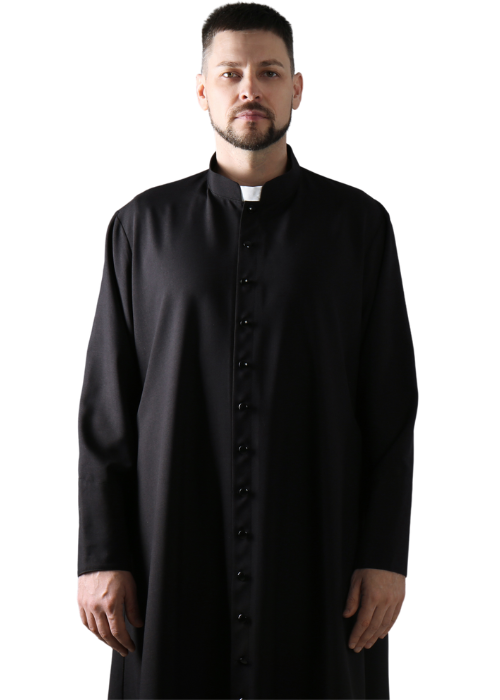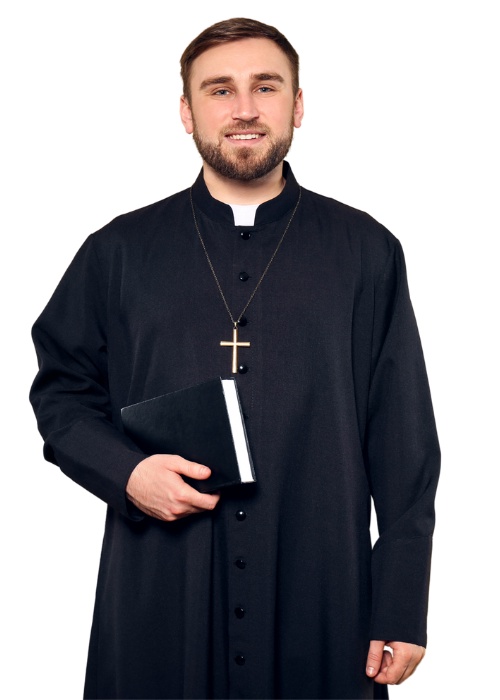Introduction
In the realm of religious traditions, clerical wear serves as a visual manifestation of faith, authority, and sacred rituals. Beyond its spiritual significance, clerical attire has evolved over centuries, blending tradition with contemporary styles. This specialized clothing carries symbolic significance, reflecting the wearer's role, status, and adherence to religious traditions. Clerical wear refers to the distinctive clothing worn by clergy members, including priests, ministers, pastors, and other religious leaders, as part of their official attire during religious ceremonies, worship services, and various ecclesiastical duties.

The Legacy of Tradition
Clerical wear carries a rich history that traces back to the earliest days of organized religious practices. In the early Christian era, clergy members distinguished themselves through modest garments, emphasizing humility and simplicity. Over time, the evolution of clerical attire became a canvas reflecting the cultural, social, and ecclesiastical changes of each era.
The iconic cassock, a full-length garment worn by clergy members, emerged as a symbol of devotion. Its design evolved from the everyday wear of ancient Romans, adapting to signify the sacred responsibilities of those who wore it. The history of clerical attire weaves through various cultures, traditions, and religious denominations, creating a diverse and nuanced tapestry.
The Symbolism in Clerical Wear
Clerical wear is not merely a matter of style; it is a language of symbolism that communicates spiritual roles and hierarchies. Each element, from the color of the vestments to the style of the robes, is laden with meaning. The clergy's attire serves as a visual proclamation of their dedication, status, and connection to the divine. The Roman collar, a distinctive feature of clerical shirts, originated in the 19th century as a symbol of priesthood. This simple yet powerful accessory became synonymous with clerical identity, worn by priests and clergy members worldwide. Understanding the symbolism behind each garment unveils a deeper appreciation for the rituals and traditions embedded in clerical wear.
Navigating New Trends in Clerical Attire
In the 21st century, clerical wear has undergone a transformative journey. While deeply rooted in tradition, contemporary clergy members are embracing new trends that reflect their individuality and engage with modern fashion sensibilities.
One notable trend is the introduction of more diverse colors into clerical wear. Beyond the traditional black, white, and purple, clergy members are exploring a broader spectrum of hues. This shift not only adds vibrancy to religious ceremonies but also symbolizes a more inclusive and open approach within the clergy. The integration of sustainable practices is another emerging trend. Some clergy members and ecclesiastical suppliers are prioritizing eco-friendly fabrics and ethical manufacturing processes, aligning their attire choices with broader societal movements toward conscious consumerism.
The Art of Designing Modern Clerical Attire
Eclergys specializes in providing high-quality clerical wear, offering a range of attire designed to meet the distinct needs of clergy members. With a focus on craftsmanship, tradition, and contemporary styles, Eclergys is dedicated to providing clerics with regalia that not only adheres to established ecclesiastical standards but also reflects individual preferences and modern aesthetics. Whether you are seeking traditional designs that align with centuries-old symbolism or looking for custom-designed clerical wear to express your unique style, Eclergys caters to a diverse range of preferences.
Innovations in Clerical Attire
As clergy members lead increasingly diverse and dynamic congregations, the need for comfort in clerical wear has become paramount. Innovative designs and materials now prioritize functionality without compromising the sacred nature of the garments. Moisture-wicking fabrics, lightweight cassocks, and breathable shirts are among the modern innovations. These adaptations ensure that clergy members can engage in their pastoral duties with ease while maintaining the dignity befitting their roles.
Cultural Influences in Clerical Wear
Clerical wear is a global phenomenon, and its style often reflects the cultural nuances of different regions. From the ornate vestments of the Eastern Orthodox Church to the simple yet elegant attire of Protestant clergy, the diversity in clerical wear mirrors the richness of global religious traditions. Cultural influences extend to the accessories as well. For example, variations in the design of clerical hats and stoles often carry cultural significance, adding layers of meaning to the garments worn by clergy members worldwide.
Closing Remarks
As we conclude our exploration into the world of clerical wear, one thing becomes clear: it is a tapestry that continues to unfold with every generation. From its humble origins to the contemporary trends shaping its present, clerical attire is a dynamic expression of faith, tradition, and individuality. Whether adorned in the classic vestments of centuries past or embracing the innovations of the present, clergy members navigate a nuanced realm of symbolism and style. As we celebrate the elegance woven into the fabric of clerical wear, we honor not just the attire itself but the profound role it plays in the spiritual journey of those who wear it. In each cassock, stole, and chasuble, we find threads of reverence, creating a tapestry that transcends time and unites the diverse stories of the clergy around the world.
FAQs
What is clerical wear?
Ans. Clerical wear refers to the specialized clothing worn by clergy members during religious services, ceremonies, and official functions. It includes a range of garments such as cassocks, albs, stoles, and collars, each carrying its own significance within different religious traditions.
Why do clergy members wear specific attire?
Ans. Clergy members wear specific attire, known as clerical wear, to symbolize their religious roles, signify their commitment to their faith, and distinguish themselves during worship and other religious activities. The attire often holds deep symbolic meaning within the context of their religious traditions.
What are the common components of clerical wear?
Ans. Common components of clerical wear include cassocks, albs, stoles, chasubles, and clerical collars. These garments vary in design and symbolism across different denominations and traditions, but collectively they represent the solemnity and reverence of the clergy's role.
Can clergy members personalize their clerical wear?
Ans. Yes, many clergy members have the option to personalize their clerical wear. While adhering to the guidelines of their religious tradition, they may choose specific fabrics, colors, and designs that resonate with their personal preferences, allowing for a degree of individual expression.
Is there a specific color code for clerical wear?
Ans. The color code for clerical wear often varies according to the liturgical season and specific traditions. Common liturgical colors include white, red, green, purple, and black, each carrying its own symbolic significance related to different periods of the church calendar.


No comments yet